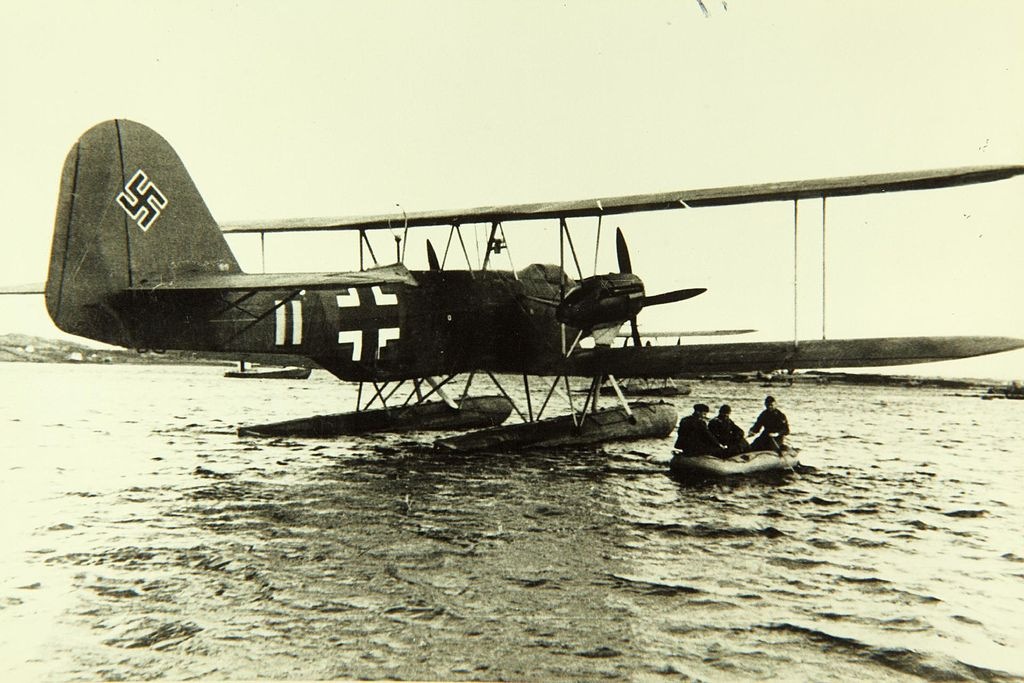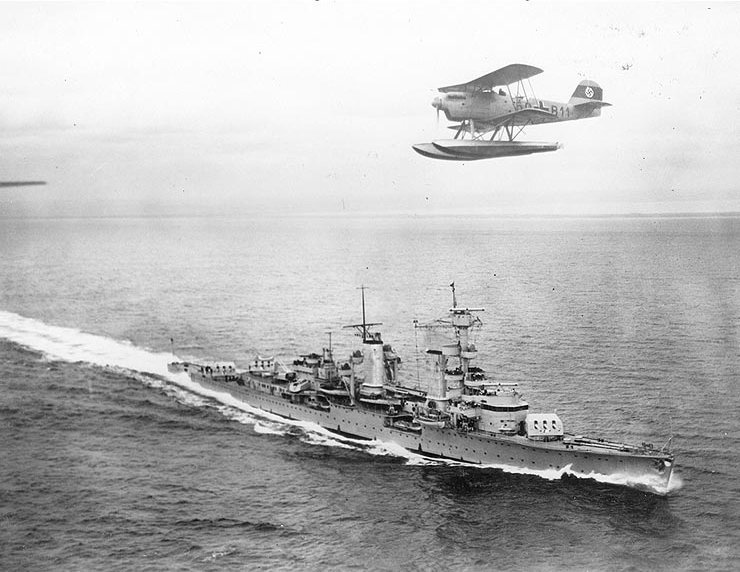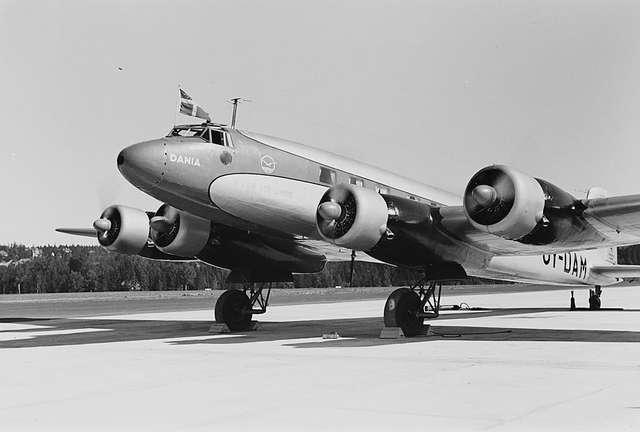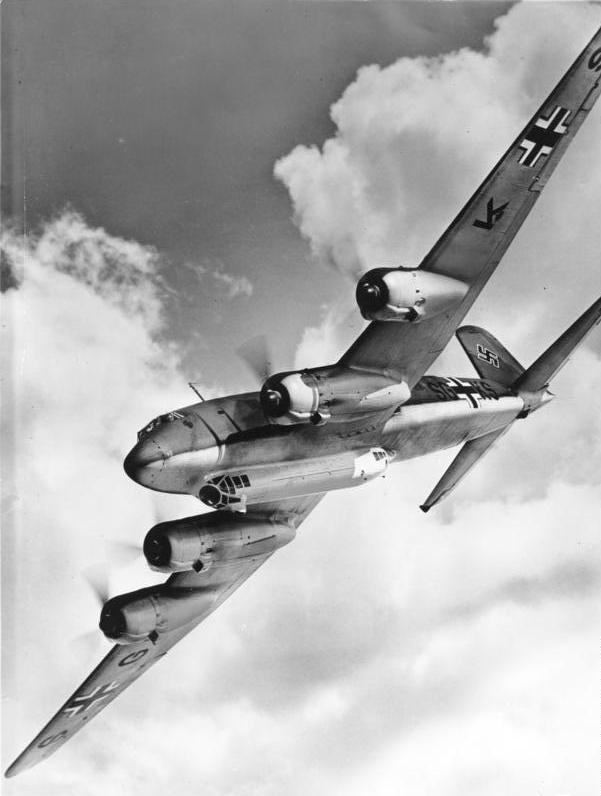Part 2 of my series on the role of air power in the Battle of the Atlantic. Having discussed RAF Coastal Command in the early war, I will be switching over to Germany and discussing Luftwaffe capability pre-war and during the early war.
Sources:
“The Far Distant Ships” by Joseph Schull, ISBN-10 0773721606 (An official operational account published in 1950, somewhat sensationalist)
“North Atlantic Run” by Marc Milner, ISBN-10 0802025447 (Written in an attempt to give a more strategic view of Canada’s contribution than Joseph Schull’s work, published 1985)
“Reader’s Digest: The Canadians at War: Volumes 1 & 2” ISBN-10 0888501617 (A compilation of articles ranging from personal stories to overviews of Canadian involvement in a particular campaign. Contains excerpts from a number of more obscure Canadian books written after the war, published 1969)
“The Corvette Navy” by James B. Lamb, ISBN 0-7737-3225-X, (A shorter book that contains personal anecdotes of Mr Lamb’s service aboard corvettes during the Battle of the Atlantic, and later his involvement in the D-day landings)
“The Essential Aircraft Identification Guide: Allied Bombers 1939-1945” by Chris Chant, ISBN 978-1-905704-70-5
“The World Encyclopedia of Bombers” by Francis Crosby of the Imperial War Museum, Duxford. ISBN 10 1780192053
“The Essential Aircraft Identification Guide: Luftwaffe Squadrons 1939-45” by Chris Bishop, ISBN 1-904687-62-8
“Military Aircraft Visual Encyclopedia” published by Amber Books, ISBN 978-1-906626-71-6
Pictures are courtesy of Wikimedia Commons, Library and Archives Canada, Uboat.net, The Rooms Provincial Photo Archive, and other sources. I only use photos that exist in the Public Domain unless otherwise stated.
The Maritime Luftwaffe, 1939-140
Pre-war issues suffered by Allied forces were somewhat mitigated by a few factors that have already been previously discussed, but which I shall recap briefly now. The first, and more beneficial one, was that the Kriegsmarine was comparatively slow to get its operations underway. There were few U-boats, few capital ships (in comparison to the RN), and any attempt to break out into the North Atlantic entailed either a suicidal charge around Denmark and out the Channel, or through the North Sea. Neither option was particularly appealing to German Naval Command, and as a result merchant vessel losses, while still unfortunate, remained more or less manageable. Of course, the end of the Phoney War brought the end of this period of relatively light casualties. Denmark and Norway were secured by German forces, removing Denmark as an obstacle and opening up the long-coastlines of Norway to German surface warships. France and the Low Countries would fall soon after this, giving way to the first “Happy Time” wherein German U-boats were given never before seen opportunities to wreak havoc on Allied shipping.
The second factor was essentially a failing that the enemy had brought upon themselves. While Coastal Command may have been on the lowest rung of the RAF ladder, the Luftwaffe had seriously neglected their own maritime proficiency to a much more poignant degree. This was completely understandable of course. Britain and Germany had completely different strategic focal points. England was an island with a long coastline, she had a massive merchant fleet, the world’s largest navy, in short they had an extremely vested interest in maritime affairs. There was the Fleet Air Arm and RAF Coastal Command, both dedicated strictly to supporting naval operations. Germany had no aircraft carriers, no naval aviation to speak of at all outside of reconnaissance float planes deployed from capital ships. Germany had no sea lanes to patrol, no major bodies of water to worry about if all went according to plan. The Luftwaffe was trained and equipped to fight in the air and support the Heer on the ground.

(A Dornier Do 18B photographed flying past the catapult ship Ostmark, circa 1937. Photograph credit to The Flight Magazine archive from FlightGlobal.)
That being said, there was a limited amount of thought given to maritime duties, and there were some areas of crossover. The Luftwaffe’s insistence on perfecting dive-bombing and Close Air Support (CAS) were both skills that could transfer over to attacks on enemy ships and naval installations. The problem was aircraft suitability. Very few of Germany’s aircraft were built with long-rang anti-shipping missions or patrolling in mind. There would be efforts made to improve capabilities as the war progressed.
To lay out what Germany did possess pre-war:
Maritime operations conducted by the Luftwaffe were overseen by the _ Führer der SeeLuftstreitkräfte _, who was subordinate to the General der Luftwaffe beim Oberkommando der Kriegsmarine. The SeeLuftstreitkräfte was nothing in comparison to the Fleet Air Arm or the carrier-borne air forces of the US and Imperial Japanese navies. It possessed few aircraft, was designed primarily for reconnaissance in the Baltic and North Sea, and it had little to no experience of conducting offensive operations against enemy shipping. The fleet force consisted mostly of flying boats, primarily the Dornier Do 18D, the Heinkel He 59B, and the Heinkel He 115A. These aircraft were organized into KustenFliegergruppen (Ku.Fl.Gr., or Coastal Air Groups), located at coastal bases along the Baltic and North Sea coasts of Germany.

(A Heinkel He 59, date unknown).
Their primary objective was to provide a reconnaissance capability for the Kriegsmarine, operating in conjunction with the fleet. Offensive capability was limited to minelaying, though torpedo operations were not entirely alien, and some units experimented with torpedo exercises from time to time. 1936 had seen the creation of Luftwaffe units dedicated for service aboard naval warships, and April would see the creation of new BordFliegerGruppen (Embarked Air Group). One unit in particular, BFGr. 196, provided the catapult-launched seaplanes for use aboard Kriegsmarine capital ships and cruisers, although due to a number of organizational shufflings they would not receive official recognition as BFGr 196 until 1943.
According to The Essential Aircraft Identification Guide: Luftwaffe Squadrons 1939-45, pre-war aircraft strength sat at 50 Heinkel He 59s, 8 Heinkel He 115s, 53 Dornier Do 18s, and 66 Heinkel He 60s. Beneath the General der Flieger beim ObdM in Berlin, were two Fliegerdivisions; F.d. Luft West HQed at Jever, and F.d. Luft Ost (East) HQed at Dievenow/Pommern (which is now Dziwnow, Poland). Beneath F.d. Luft East were two Coastal Air Groups, Ku.Fl.Gr. 506 and 706 operating 19 and 22 aircraft respectively. F.d. Luft West got the majority of the aircraft available, with three Coastal Air Groups (Ku.Fl.Gr. 106, 306, and 406, who had 44, 31, and 39 aircraft respectively) and both of the First Embarked Air Group squadrons (1./BFGr. 196 and 5./BFGr. 196). The First Embarked Air Group had issues with organization and planning, evidenced by the fact that they had a Squadron 1 and Squadron 5. Squadrons 2 and 3 were not formed until after the original group was dissolved in 1941 and Squadron 4 (intended as a reserve) never got past the initial stages of formation. Squadron 5 was actually the First Squadron of Coastal Air Group 406, and had been planned to be the First Squadron of the 2nd Embarked Air Group, which consequently never got formed and resulted in them being shoved under the First Embarked Air Group. 1./BFGr. 196 and 5./BFGr. 196 had 12 and 10 aircraft at their respective disposals, all He 60s. Fifth Squadron was eventually returned to Coastal Air Group control.
The aircraft themselves were, like the British, a mixed bag. The Heinkel He 115 was, in the words of the Military Aircraft Visual Encylopedia, “The most effective of the Luftwaffe’s attack and reconnaissance seaplanes”. A range of 3350 Km made it an ideal patrol aircraft, but its greatest success was against the arctic convoys that lacked air cover, striking from Norway once Germany had completed its invasion. The appearance of escort carriers later in the war would put an end to this, but that was a long time coming. The He 115 also spent much of the Phoney War dropping mines near Southern British ports, aiming for narrow points that ships had to pass through or nearby. The River Thames as also apparently a prime target.
The He 115 was the exception to the rule. The Dornier 18D was obsolete by the start of the war, seeing some limited service on patrol in the Baltic and North Seas before being relegated to a training role. The Dornier 18D was the first German aircraft to be shot down by the British, with a flight of three being engaged on the 26th of September, 1939 by a force of Blackburn Skua Fighter-Bombers of the Fleet Air Arm, flying from HMS Ark Royal. The aircraft was able to make an emergency landing but was destroyed by HMS Somali.
The Heinkel He 59 and He 60 both saw varied use. The He 59 was used as a torpedo bomber and minelayer but was inferior to the He 115, and repurposed as a SAR aircraft searching for German pilots at sea. It would create controversy in this role, as the British felt that the Germans were using them as reconnaissance planes in disguise and promptly shot a few down. The Germans said this was a violation of the Geneva Convention stipulations regarding the attacking of “mobile sanitary formations” like hospital ships and ambulances. The British argued back that the use of aircraft for SAR was something that the Convention could never have anticipated and therefore felt it fell outside the boundaries, not to mention the fact that they believed the Germans were abusing the red cross symbol for recon purposes, and felt the whole argument was pointless anyway. The red cross and civilian markings were eventually phased out for camouflage and armament.

(An He 60 flying over the German light cruiser Koln, sometime in the later 30s)
The He 60 was deployed aboard German naval vessels in the 30s as their catapult launched floatplane. It served in this role ably enough but was replaced by the end of 1939 by the He 114, and was relegated back to the Coastal Air Groups. By late 1940 they had been removed from frontline service entirely, but saw a second win with the invasion of the Soviet Union, patrolling the Baltic and Mediterranean. Nevertheless, all of them were eventually phased out by 1943.
Germany would take quick steps to fix its deficiencies in aircraft quality, introducing several new types to replace these aging early 30s flying boats. As war with Britain and France seemed ever more likely, it became clear to Luftwaffe planners that even a rudimentary form of maritime strike capability was necessary. The Luftwaffe formed its own anti-shipping force, completely separate from the navy. With the outbreak of war, the force, commanded by General Hans Geisler, was upgraded and became Fliegerdivision 10 of Luftflotte 2.
The most successful newcomer to German maritime aviation was the Focke-Wulf Fw 200 ‘Condor’. The Fw 200 Condor maritime reconnaissance bomber aircraft had its origins in the Deutsche Lufthansa airliner. The Fw 200 was a low-wing, all-metal, four-engine monoplane with fully retractable undercarriage which could carry 26 passengers. The aircraft was a headline-grabber in 1937, and set numerous records pre-war for non-stop flights from Germany to New York and Tokyo. Finland, Denmark, and Brazil ordered the airliner by the military capabilities of the large aircraft were not lost on the Japanese, who were the first to ask for a military long-range maritime-reconnaissance version (showing where their priorities were). This development prototype, known as the Fw 200 V-10, had a large below-floor cabin grafted onto the underside of the fuselage, which carried the aircraft’s bomb load as well as defensive machine guns. The aircraft’s obvious applications came to the attention of the searching Luftwaffe, who requested a prototype of their own. As war was declared, the prototype was pressed into production. The first variants received were transport variants that lacked the ventral gondola or any other form of maritime patrol and bombin equipment. They had a maximum speed of 356 Km/h, and a maximum range of 3560 Km.

(The pre-war Condor. A Danish Airlines Fw 200 Condor at Fornebu Airport near Oslo, June 1st, 1939.)
Actual service for Maritime Luftwaffe Squadrons in the early war was limited by Germany’s limited maritime geography and the nature of early war operations. Poland had only limited access to the Baltic through the Polish Corridor around Danzig (modern day Gdansk), but Polish submarines and destroyers could have potentially been a threat to the Kriegsmarine units supporting the Wehrmacht along the coast. As a result, the two Eastern Coastal Air Groups played an important, if limited, role in the early campaigns of the war, providing reconnaissance information on Polish naval forces and ports before the German invasion on September 1 1939. The Phoney War saw more patrols into the Baltic and North Seas, reporting on Allied warships when they could be found, minelaying around Allied ports, and other work that the pre-war Maritime Luftwaffe had been prepared for.
Coastal Air Group forces took part in Operation Weserubung, the invasion of Denmark and Scandinavia in April 1940. In that campaign they provided reconnaissance platforms, as well as being used to transport troops taking part in the invasion of Norway. Also in April 1940, the first unit to receive the Condor (and its main operator for the war) Kampfgeschwader 40 [Battle Wing 40] received its first aircraft. With a crew of five (pilot, co-pilot, and three gunners), the Condor flew its first mission against British shipping on April 8th, 1940, while operating from Denmark. These Fw 200C-1 maritime-patrol aircraft were armed with a 15mm machine gun in the Forward dorsal turret, and a 20mm gun at the front of the ventral cupola. The rear of the gondola housed a single 7.92mm machine gun, and the aft dorsal position contained a single 13mm MG 31. Bomb load was 4626 lbs maximum, carried in the gondola and under the wings. Two months later the unit was transferred to France, to begin combat operations in the Bay of Biscay.
They flew a giant loop from Bordeaux to bases in Norway, doing the reverse trip the following day. Once a convoy was located they provided course data to the High Command and for the packs of U-boats. Only squabbling between the Kriegsmarine and the Luftwaffe about operational authority prevented a development which could have been disastrous for the British. The Condors got their fair share of kills as well. By September 1940 they were credited with sinking approximately 90,000 tons of Allied shipping. They preferred hunting lone merchant vessels travelling to and from Africa, the Mediterranean, and South America, ships which lacked the protection of the convoys.

(What Churchill called ‘the Scourge of the Atlantic’, the Focke-Wulf Fw 200C ‘Condor’. Photo courtesy of the Bundesarchiv)
The U-boat was still the primary offensive weapon in the Battle of the Atlantic, but maritime aircraft were also now playing a major part in the campaign. Recently establish Fliegerkorps 10 controlled the Luftwaffe anti-shipping forces, but this group was transferred to the Mediterranean in December 1940, by which point there were 36 Condors in service. The Condors of KG 40 remained in France and in the first two months of 1941 they sank 46 ships, totalling nearly 173,000 tons. The U-boats sank only 14 more ships in the same time frame. In March 1941 a major reorganization of the Luftwaffe saw the creation of Fliegerkorps Atlantik, which controlled all anti-shipping forces along the Atlantic coast. Luftflotte 5 was responsible for Norway and the Arctic and received a few Condors for that purpose. Fliegerkorps 9, based in Holland, was given sole responsibility for minelaying, allowing Fliegerkorps Atlantik to focus solely on hunting ships and relaying convoy positions.